
Creative writing transcends conventional academic boundaries, serving as both a discipline and a practice that invites diverse perspectives and influences. According to Ian Schimmel, associate teaching professor of English at Rice University, creative writing is characterized by its openness to exploration and expression.
“It does not define the scope of what a thought project should be,” Schimmel said, adding that creative writing encompasses a wide range of forms and styles, from traditional genres like fiction, poetry, nonfiction and drama to emerging mediums that shape contemporary discourse. “It’s very permeable to other parts of the university that want to participate in it.”
Extending beyond mere poetic imagery or storytelling, creative writing delves into the depths of human experience, capturing the rhythm, themes and pauses that define individual narratives.
“We’re all an amalgamation of stories,” said Kiese Laymon, the Libbie Shearn Moody Professor of English. “The rigor of having to explore your imagination and memory with these tools we have is hard work. We try to make it enjoyable work, but it’s definitely hard work.”
Creative writing plays a pivotal role in understanding and interpreting societal narratives, Schimmel pointed out, highlighting the significance of studying hybrid forms that blend elements of journalism, memoir and personal reflection, reflecting the multifaceted nature of contemporary storytelling.
“I prefer the term ‘imaginative writing’ or ‘public writing,’” said Justin Cronin, writer-in-residence in English. “‘Creative writing’ pays less attention to the idea that this is a discipline. It really is a very particular kind of discipline that you need to learn to do.”
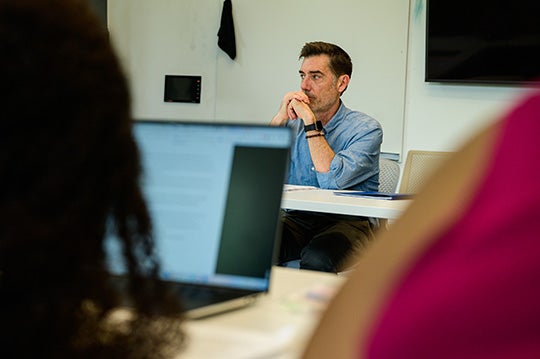
At its core, creative writing is about having something to say — a point of view or an urgency that compels expression.
“We are equipping students with the tools to say what they feel is most important and urgent,” Schimmel said. “That’s where the fulfillment comes from.”
For Cronin, teaching creative writing is a dynamic process of self-discovery and exploration.
“Anyone who teaches creative writing is teaching themselves, full stop,” Cronin said. “We are doing both all the time.”
He emphasized the interdisciplinary nature of the discipline, drawing connections between literature, film and societal trends. Cronin’s spring 2024 course titled “The End of the World as We Know It: Writing (and Reading) Apocalypse” exemplifies this interdisciplinary approach, blending literary analysis with creative expression to explore existential themes.
“There is a lot to learn about craft, about how to make a good sentence, how essays really work, how stories or novels work,” Cronin said. “But then there are also the broader questions: Why do we do this? Where does it come from, and where does it go?”
‘It feels like home’
It’s worth reflecting on the latter question in relation to Rice’s creative writing program. Of the current faculty, Cronin has the longest institutional knowledge. He came to Rice in 2003, effectively doubling the program’s full-time faculty.
“It was just me teaching fiction and one poetry professor,” Cronin said. “That was creative writing in 2003.”
A couple of years later when he sold a partial manuscript of what evolved into his trilogy “The Passage,” Cronin stepped down from his full-time teaching role to focus on the series.
Schimmel later joined Rice during a two-year fellowship starting in 2011. After his first year, the two other creative writing faculty members retired.
“I was one of only one or two other people teaching creative writing at Rice in 2012,” Schimmel said.
Associate professor Amber Dermont joined the faculty followed by assistant professor Paul Otremba then Lacy Johnson in 2016, which is when Cronin returned to teach at Rice.
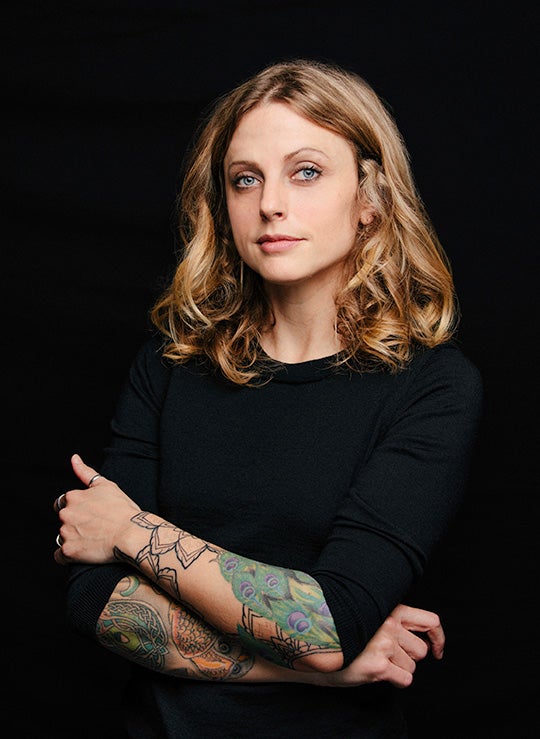
“We made a strategic plan that involved investing in creative writing, trying to make Rice the best undergraduate creative writing program in the country,” said Lacy Johnson, associate professor of creative writing and director of undergraduate studies in English. “We proposed hiring a few more writers so that we could continue to grow.”
And they did, adding Laymon, professor in the practice Andrea Bajani, assistant professor Bryan Washington and associate professor Tomás Q. Morín.
“When I saw the job posting at Rice, every writer I knew was applying for the job,” Morín said. “Every writer I knew wanted to work at Rice because it was a dream job.”
Morin said his desire to join the faculty only grew after visiting the campus during the interview process when he got to meet the people he’d be working with and the students he’d be teaching.
“I felt like this job could be my last stop in terms of my academic career,” Morín said. “This is a place where I could retire. Once I actually did start teaching here, all of that was affirmed. I don’t want to ever teach anywhere else again. This doesn’t feel like a job. It feels like home.”
“With Lacy Johnson, Ian Schimmel, Kiese Laymon, Bryan Washington, Tomás Morín, Amber Dermont, Andrea Bajani and Justin Cronin, Rice boasts some of the most significant writers in the United States,” said Kathleen Canning, dean of the School of Humanities, in sharing her assessment of the creative writing faculty she calls “amazing.”
“Spectacular” is the word Cronin choses to describe his colleagues.
“The amount of raw achievement in so many areas is unparalleled,” Cronin said, pointing to Laymon’s selection as a MacArthur Fellow and Johnson’s creation of the Houston Flood Museum. “We have short story writers, essayists, novelists, poets, screenwriters. We have it all.”
Laymon, who started teaching at Rice in January 2022, expressed that he’s been impressed by how dynamic and thoughtful his colleagues are.
“Our ability to work together is one of the reasons why the creative writing program is growing at such an incredible rate,” Laymon said.
"The learning and the doing"
The program’s not growing just in terms of faculty; the academic powerhouse has captured the imagination and enthusiasm of students, sparking a surge of interest that far exceeds available capacity. Most creative writing classes have waitlists at least 20 students deep, while the waitlists for intro workshops are closer to 75.
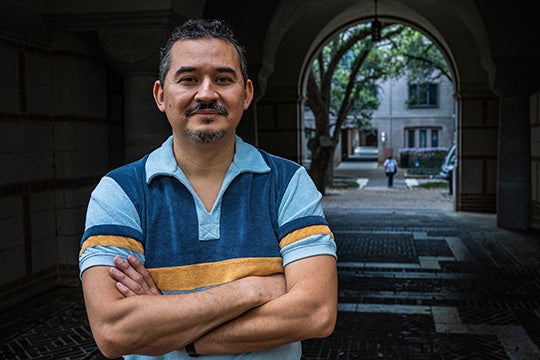
“I’ve never worked anywhere where there was such a tremendous curiosity, passion and interest in creative writing at the undergraduate level,” Morín said.
“The desire on the part of these students to use creativity to explore critically and intellectually, I’ve never seen anything like this in my life,” Laymon said, adding that he believes the interest is connected to the strength of the faculty. “You don’t find creative writing programs with any sort of growth unless the students are being taught well.”
Laymon suggested the program’s success also lies in its ability to attract students from diverse disciplines, including computer science, biology and engineering.
“There is such a hunger on our campus to make things and to take what you learned in the classroom and apply it,” Schimmel said. “There’s often a gulf between the theoretical and the practical in an education setting. What’s powerful about creative writing, and the arts in general, is the connectivity between the learning and the doing.”
Faculty members say they appreciate the diverse perspectives and interdisciplinary collaborations that emerge from such a dynamic student body.
“There are so many different kinds of expertise for students to use Rice and Houston as a laboratory to think about the issues that are facing us today,” Johnson said. “Thinking about climate, about science, about community, about culture, where better than Houston to come to learn to write about those things?”
"Experimenting with words"
The creative writing program is a catalyst for that exploration and discovery, empowering students to engage with a myriad of topics and formats while honing their skills as storytellers.
For example, on the nonfiction side, Laymon’s spring 2024 course titled "Verses/Versus: Miseducation of Lauryn Hill v. good kid m.A.A.d. city (or 1998 vs. 2012)” allows students to reflect on how music influences their lives, whether through personal experiences or the albums discussed in class. “Nonfiction Nature Writing,” taught by Johnson, merges writing and environmental philosophy.
“We’re giving consideration to the ways that we think about and talk about the environment as well as practicing writing about our relationship to the environment,” Johnson said. “Students often come to that class from the sciences. I have a lot of students from environmental sciences, geology, physics, ecology and evolutionary biology.”
The class is a different application of science, Johnson added, explaining that it provides students an opportunity to apply and translate what they’ve learned in their other classes in creative ways.
Schimmel, meanwhile, teaches podcasting courses, challenging students to report on stories beyond the hedges of Rice. By interviewing real-life characters and crafting compelling narratives, students gain valuable storytelling skills while exploring the power of audio storytelling.
“We deconstruct the narrative structures of radio storytelling to understand how a large amount of material can be condensed into something that is manageable, enjoyable and informative for an audience,” Schimmel said.
Central to the creative writing experience at Rice is the workshop. Through peer critique and experimentation, students refine their writing and gain insights into audience engagement and narrative structure.
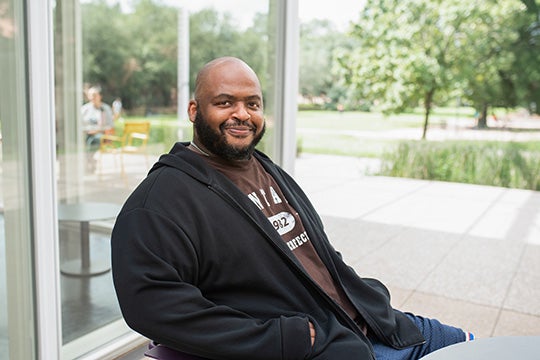
“A workshop environment helps you compare your intentions with the realities of your audience,” Schimmel said. “It pulls you out of yourself. It makes you conscious of how form and technique affect your reader’s desire to interact with your work.”
Laymon underscored the importance of experimentation in creative writing. By encouraging students to explore literary traditions and experiment with language, the program fosters a culture of innovation and self-expression.
“We all have these 26 letters. How do we create a story with them?” Laymon said. “We need young people out there experimenting with words and to be encouraged to do that.”
"A unique opportunity"
As Rice’s creative writing program has evolved, its faculty have remained dedicated to fostering a culture of creativity, expression and intellectual inquiry, shaping the next generation of writers and thinkers.
“One of our goals is to broaden the public’s understanding of what creative writing is and how it can serve as a public utility for all,” Schimmel said.
The next step for the program, according to Cronin, is to elevate from a strong program to a national leader in undergraduate creative writing education.
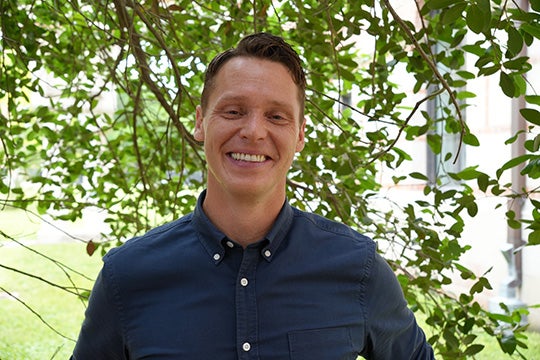
“We want to be the best undergraduate creative writing program in the country, which means students come to Rice specifically for that,” Cronin said. “We want to build the kind of program that people deliberately seek out. Students apply to a university for a thing, and we want to be that thing.”
Faculty members are exploring the possibility of establishing a Master of Fine Arts (MFA) in creative writing, which reflects the program’s commitment to furthering its impact and engaging with a broader community of writers.
“There’s a lot of interest,” Johnson said. “We have a really unique opportunity at Rice to build something from scratch.”
“That feels incredibly exciting to me,” Morín said, explaining that the goal is to create a program that addresses the shortcomings of the traditional MFA model while offering a fresh and dynamic approach. “It gives me a lot of energy, because as a group, we can offer the kind of experience that a graduate student in creative writing can’t find anywhere else.”
For more information about Rice’s creative writing program, click here.

